'Escape the Everyday' with a weekend break in Bury St Edmunds | A 2-day itinerary
Looking for the perfect destination for a short break? Why not visit Bury St Edmunds? The historic cathedral town is one of the hidden gems of Suffolk. Brimming with history, Bury St Edmunds is compact and walkable making it very easy to explore and enjoy the town even on a short weekend break.
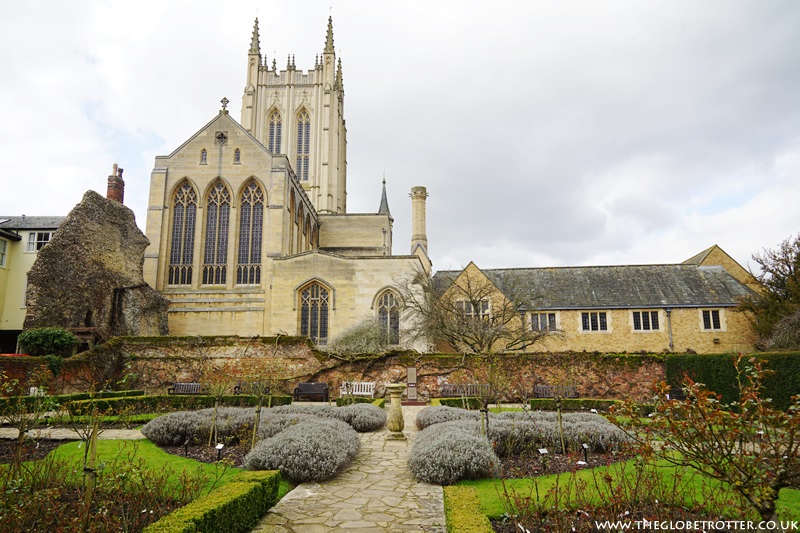
Ad | Press trip | Contains affiliate links
Post our recent visit to Bury St Edmunds; I put together this guide on how to spend a weekend in Bury. Do give it a read; it might give you some inspiration for your trip to this cathedral town.
Day 1 in Bury St Edmunds
Enjoy a guided tour of Bury St Edmunds
One of the best ways to explore a new town or city is to look up a guided walking tour. They are a great way to get your bearings in a new place especially one with as much history as Bury St Edmunds.
Bury St Edmunds Tour Guides offer walking tours of the town. The tours are conducted by trained guides from the Institute of Tourist Guiding.
The tours are engaging with lots of interesting facts and stories. Our guide, Terry O’Donoghue, was full of information about the town and its history and took us on a guided tour of the Abbey Gardens and Abbey Ruins, answering all the questions we had. Some of the highlights of the tour were:
Ruins of the Abbey of St Edmund
Undoubtedly one of the most popular attractions in the town is the ruins of the Abbey of St Edmund. According to Visit Britain's 2020 Trends Report, the Abbey Gardens and Abbey Ruins were the 5th most visited free attraction in England for that year.
Edmund, King of East Anglia, was killed in 869 by the Danes after he refused to give up his faith. It is said that he was tied to a tree and shot with arrows before being beheaded. His remains were moved to this site in Bury St Edmunds (then known as Beodericsworth) in 903 and the town became a place of pilgrimage. It was only in 1020, that a stone church was constructed for St Edmund’s body by King Canute. And that was the beginning of the Abbey of St Edmund. In the 11th and 12th centuries, the abbey was enlarged and rebuilt drawing in large number of pilgrims from all over the UK.
Throughout 1327, the abbey suffered lots of damage due to the clashes between the monks and the local people. In the year 1431, the west tower of the abbey collapsed. And more trouble came its way when the entire abbey church was burnt out in 1465. It was rebuilt in 1506 and in 1539, when the Dissolution of the Monasteries happened; the Abbey was surrendered to King Henry VIII. After that the abbey gradually went into decline.

All that remains today are the ruins of the abbey. We enjoyed the guided tour of the ruins. Terry, our guide, provided interesting background information on every section of the ruins giving us a deeper historical understanding of the abbey and the town.
The Abbey Gardens
Set in 14-acres, the Abbey Gardens is an oasis of peace and has won the Green Flag Award on several occasions. Originally it was a botanic garden created by Nathaniel Hodson in the same style as Brussels' Royal Botanic Gardens.
During the Coronation celebrations for George VI in 1937, the garden underwent a redesign and sixty-four island beds replaced the then existing layout. Today the gardens are jointly owned & managed by West Suffolk Council and the English Heritage.

There are a number of different areas like the Sensory Garden which has scented plants and herbs and the key focus here is on sensory experience. The Water Garden (pictured below) featuring a small water body offers tranquillity and is a lovely place to relax.
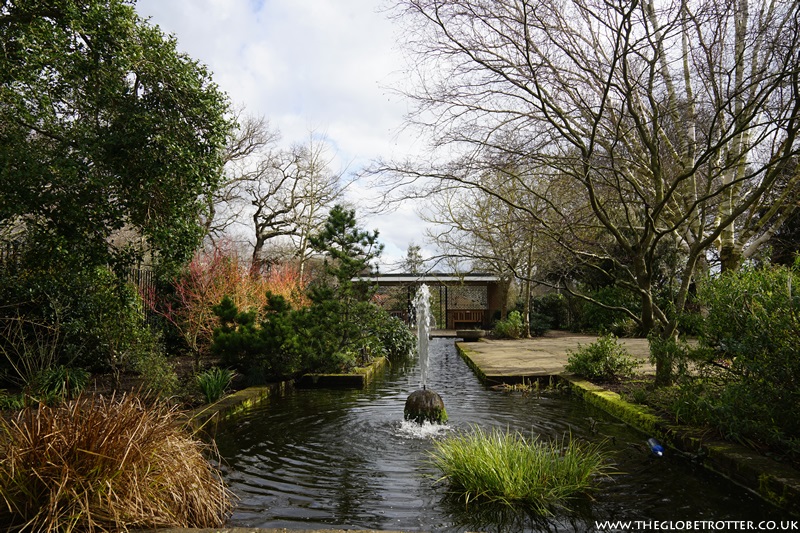
Then there is the Appleby Rose Garden, a beautiful rose garden that is named after John Appleby, an American serviceman who served with the 487th Bomb Group in Lavenham. The Garden of Reflection features a tall teardrop and 57 cobblestones. Each stone represents one of the 57 Jews who were murdered in Bury St Edmunds on Palm Sunday (on 19th March 1190). The garden also commemorates all victims of the Jewish genocide.
There is a small aviary as well in the garden and a wildflower labyrinth near the children's play area.
There's much more to see in the gardens as pointed out by our guide. We came back to the gardens later next day for a leisurely stroll.
The Daily Tour by Bury St Edmunds Tour Guides usually lasts around 90 minutes and you need to book the tickets in advance via their website. Ticket prices: Adults £7.50, U-18s £4, U-5s free, Family of four (max 2 adults) £20.
To book your ticket(s), visit www.burystedmundstourguides.org
St Mary's Church
St Mary's Church is one of the largest parish churches in England. It is a part of the Abbey Complex and is said to have the second longest aisle and the largest west window. It also has a unique and beautiful hammer beam angel roof.
The first church is on this site was built in the 7th century while the second one was built in the early 12th century. Major renovations were undertaken between the 14th-16th centuries and it was then that the nave, aisles and the tower were built.

Mary Tudor, Queen of France (and the favourite sister of Henry VIII) died at Westhorpe Hall in Suffolk, in June 1533. She was first buried at the Abbey of St Edmund but when the abbey was dissolved her remains were moved to St Mary’s Church. When you visit the church, you can find her tomb to the north side of the altar. It is said that when her remains were disentombed and her coffin opened in 1784, some people took locks of Mary Tudor's hair and passed it on to people of status within the town.
If you visit the Moyse's Hall Museum in the town, you can see Mary Tudor's hair preserved in a locket (see picture below).
St Mary’s Church is open Monday – Saturday. Admission is free.
St Mary's Church | Honey Hill, Bury St Edmunds, IP33 1RT
Greene King Brewery Tour
Greene King Brewery has been operating since 1799 in Bury St Edmunds and today has around 3,100 pubs, restaurants and hotels across the country. If you are keen to learn about how Greene King's many beers are made then you should book a place on their guided tour.
The guided tours which last 1 hour 45 minutes offer the opportunity to enter the brewery and see up close the entire process of beer making. This is where Greene King's popular ales including Greene King IPA, Abbot Ale and Old Speckled Hen are brewed.
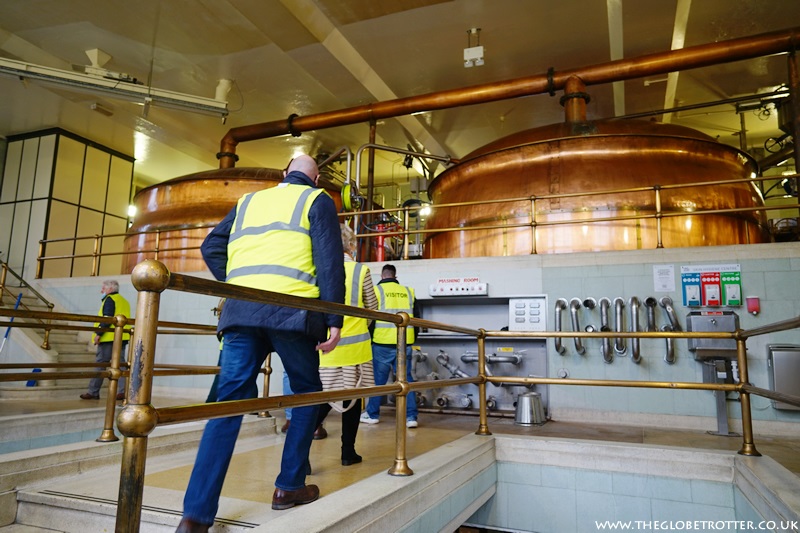
The tour also includes a trip up to the roof of the brewery. There are over 100 steps to climb but you are rewarded with fantastic views over the town.

The tour ends with a beer tasting session.

We enjoyed the tour. It was informative and engaging. The tour guide was knowledgeable and shared a lot of titbits about the history of Greene King, the brewing process and the town.
If you are a lover of cask ales, the brewery tour is an experience not to be missed. The Greene King Brewery Tour costs £18 per person and each tour booking includes a free bottle of beer to take away as well.
For more information and/or to book a guided tour, visit www.greeneking.co.uk
Greene King | Westgate Brewery, Bury St Edmunds, IP33 1QT
Go Shopping at Arc Shopping Centre
Looking to squeeze in a few hours of retail therapy while in Bury St Edmunds? The town has luxury department stores, independent and individual shops and bi-weekly, award-winning markets.
The local markets (held on Wednesdays & Saturdays) have stalls selling everything from food & drinks to clothing & accessories to plants & pottery. If you happen to visit the town during the second Sunday of the month, you can visit the Farmers Market where you can shop a wide variety of fresh, homemade food.
For those looking for a modern retail experience, there is the Arc Shopping Centre which is home to top brands like L'occitane, H&M, Clarks, JD Sports, Fat Face, Pandora, Next, Superdry, Peacocks and more.

It is a buzzing retail neighbourhood and has something for everyone. Once you have done your shopping you could enjoy some al fresco dining at one of Arc's fab selection of cafes and restaurants.
Day 2 in Bury St Edmunds
Explore Bury St Edmunds’ Public Art
Public art adds value to a town (or city) and has the power to transform public spaces. Be it memorials, statues, sculptures or graffiti, art is great for tourism and marketing.
A few years back Bury St Edmunds had a popular bollard trail (The Lark and Linnet Trail) which featured around 30+ bollards decorated with artwork by local students. During our visit we spotted some beautifully painted bollards around the town which I think are a part of that trail. My favourite was the bollard near St Mary’s Church (pictured below).
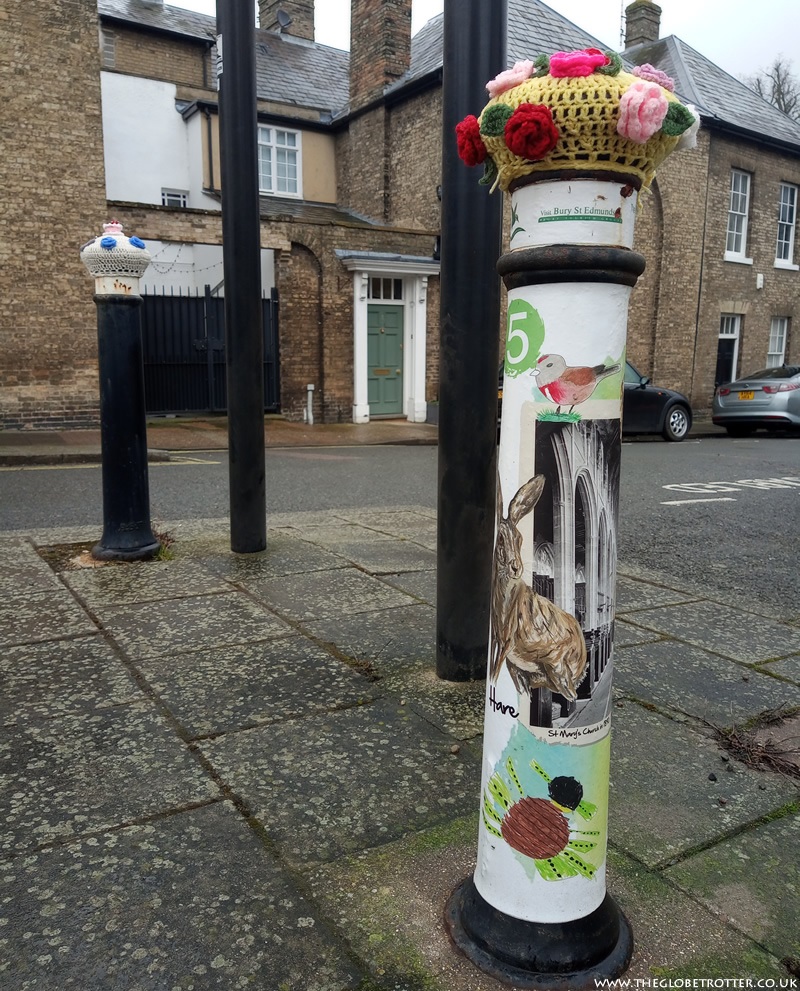
Another unique art concept we came across in Bury St Edmunds is the 'Roundabout Art' which uses striking artwork placed at roundabouts to tell the story of the town. The Risbygate Street roundabout at Parkway features a dramatic steel figure of St Edmund at his martyrdom. It was designed by Emmanuel O'Brien (a student from Bury St Edmunds who won a contest to design a roundabout for the town) and created by blacksmith Nigel Kaines and is composed of steel wire with steel arrows through Edmund's heart and body.
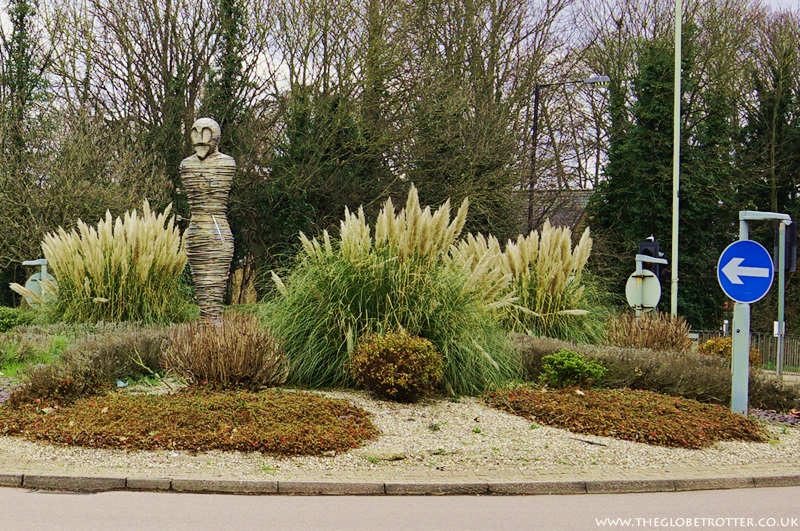
At the Southgate Green Roundabout, you will find a 7ft wood carving by sculptor Ben Loughrill that shows a wolf guarding St Edmund’s head beside his battered crown.
The Cullum Road/Nowton Road roundabout is the location for a large crown, created by artist Liz Cooke. The crown is pierced by two arrows denoting the link with St Edmund and also Greene King Brewery.
The other locations for the Roundabout Art are: King’s Road roundabout at Parkway (The Grain sculpture), Lady Miriam Way roundabout (The Flight of Peace sculpture) and Mount Road/Orttewell roundabout (The James Moore sculpture).
St Edmundsbury Cathedral
St Edmundsbury Cathedral is one of the most prominent landmarks of the town. It is flanked by the Norman Tower, an early 12th-century free-standing tower on one side and the Abbeygate, an impressive Gothic tower which acts as a gateway to the Abbey Gardens on the other side.
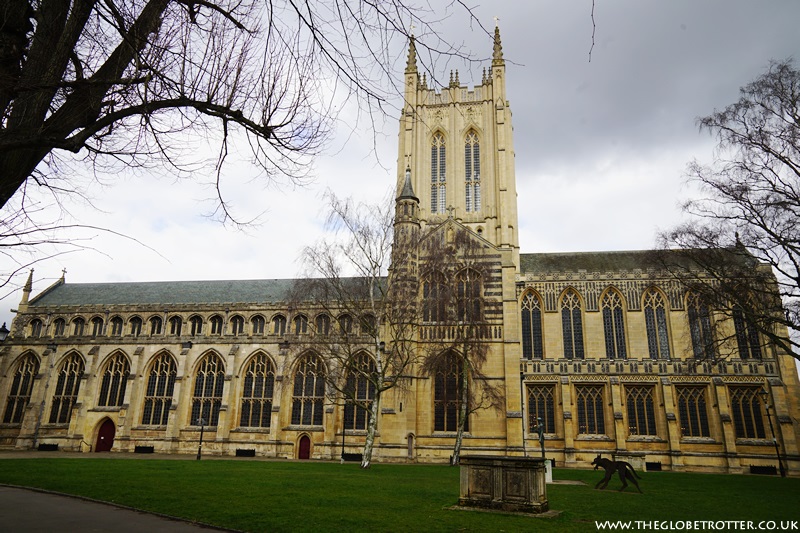
Entry to the Cathedral is free but donations are welcome.
It is worth visiting not only for the history associated with it but also for its architecture. The vaulted ceiling is stunning. It is made of European Oak and was completed in March 2010. The entire vault was made off site and then transported to the Cathedral in pieces where it was reconstructed and painted.

Another interesting artwork was a beautiful tapestry depicting King Henry VI (aged 11) kneeling before the shrine of St Edmund at the abbey. The tapestry made with wool and silk involved the efforts of 27 needle workers and took over four years to complete.
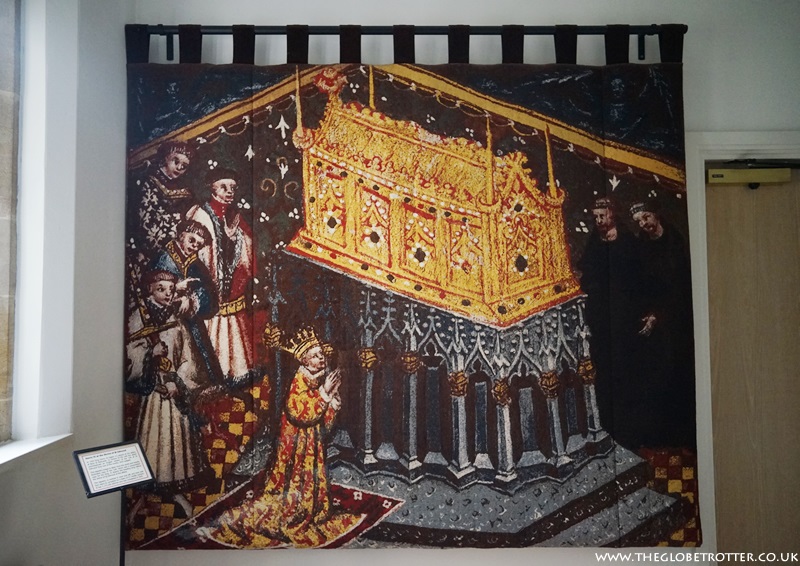
In the south-west corner of the Cathedral is St Edmundsbury's LEGO build. They will be the 4th cathedral in the UK to recreate the cathedral brick by brick from LEGO. Visitors can donate £1 per LEGO brick with funds raised from the project being used for maintenance of the cathedral, development of visitor facilities and supporting the cathedral's work with young people.
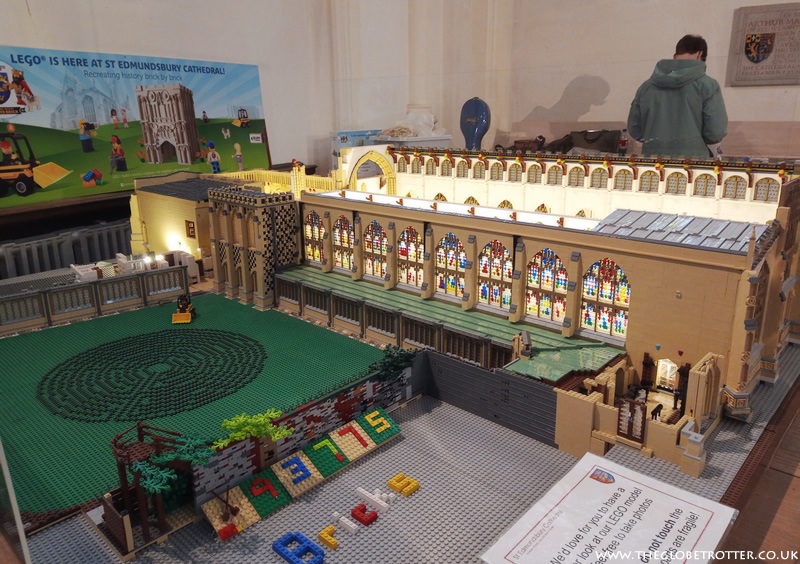
Guided tours of the cathedral operate from May to September, the tickets for which can be booked through the Tourist Information Point.
'Tower Tours' which take you up the Cathedral’s Millennium Tower run from April to October. The tours last 1 hour 15 mins and require a reasonable level of fitness as there are 202 steep and narrow steps to the top. But the climb is worth it as you will be rewarded with stunning views across the town. Tickets for the 'Tower Tours' need to be booked in advance.

To check the current opening times and/or to book tickets to the guided tours, visit www.stedscathedral.org
St Edmundsbury Cathedral | Angel Hill, Bury Saint Edmunds, IP33 1LS
Moyse's Hall Museum
Not to be missed when visiting Bury St Edmunds is Moyse’s Hall Museum. Although it is a small setting, the museum housed in one of the last surviving Norman houses in the country, offers a fascinating insight into the past. It includes collections that tell the story of the creation and dissolution of the Abbey, artefacts that provide intriguing insights into superstition & witchcraft and even prison paraphernalia!
When we visited, the museum was hosting the 'Power of Stories' exhibition. The exhibition featured three iconic costumes from Marvel Studios' Black Panther alongside Marvel comics, historic museum objects and local stories.
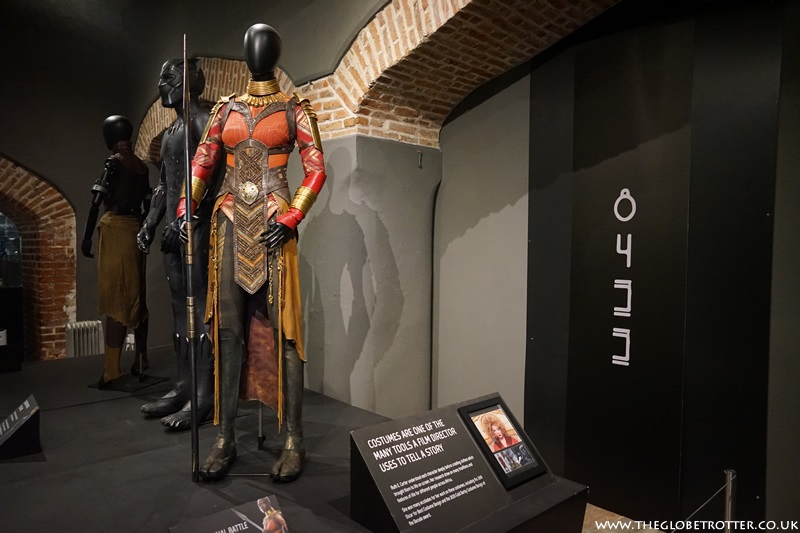
In addition to an area dedicated to St Edmund, the museum has a gallery dedicated to the Suffolk Regiment, one to poaching (featuring inhumane animal and man-traps), one to St Edmundsbury's horological collections and one to gory instruments & exhibits about murders!
It was while browsing the galleries in the museum we learnt that Moyse’s Hall served as the town Bridewell (prison/jail) in 1626, housing minor offenders and debtors.
We also came across a Gibbet Cage, which is a kind of a human form framework made of iron bands and was used to publicly display the dying/dead bodies of executed criminals! The Gibbet Cage on display in the museum was found in the late 1930s during the building of Honington Aerodrome and contained the skeleton of one John Nichols. The story is that Nichols and his son Nathan were both sentenced for murder (of Nichols' own daughter) in 1794. They had bludgeoned and then strangled her to death. After their hanging, Nathan's body was dissected and anatomised while Nichols' remains were gibbeted. Dissection was abolished in 1832 while gibbeting was abolished in 1834.

You can spend a good couple of hours in this little museum enjoying its interesting collection of exhibits.
For information about admission, opening hours, facilities etc., visit the museum's website - www.moyseshall.org
Moyse’s Hall Museum | Cornhill, Bury St Edmunds, IP33 1DX
Enjoy a Show at Theatre Royal Bury St Edmunds
If you love performing arts then a visit to Theatre Royal is recommended. Built in the 1810s and restored to its current Regency design in 2007, Theatre Royal is a Grade 1 listed building and one of the last working Regency playhouses in the country.
The theatre hosts shows and events all-round the year; a mix of their own productions as well as shows by touring companies. Interested? Find out what's on at the Theatre Royal in the coming months at www.theatreroyal.org
Theatre Royal Bury St Edmunds | Westgate Street, Bury St Edmunds, IP33 1QR
Where to stay in Bury St Edmunds
Bury St Edmunds is a small town and all the major attractions, restaurants, bars etc. are located around the town centre. So, it makes sense to choose a town centre accommodation. There are a number of hotels, B&Bs, luxury cottages and self-catering apartments; so visitors are spoilt for choice.
During our visit to Bury we stayed at The Angel Hotel, which is one of the most iconic buildings in the town. Our tour guide mentioned a couple of interesting facts about the hotel during our guided tour - one of them being that Charles Dickens stayed at The Angel as a journalist (in 1835). He subsequently stayed at the hotel on a number of other occasions as well. The room that he first stayed in is today known as the Charles Dickens Suite.
We stayed in one of the hotel's Contemporary Superior Rooms which was spacious, clean, beautifully decorated and boasted of fantastic views of the Abbey Gate and Abbey Gardens. All contemporary rooms come with a king-size bed, seating area and a work desk. The room also came with a flat screen TV, complimentary Wi-Fi, cafetiere coffee & luxury teas and a hairdryer.

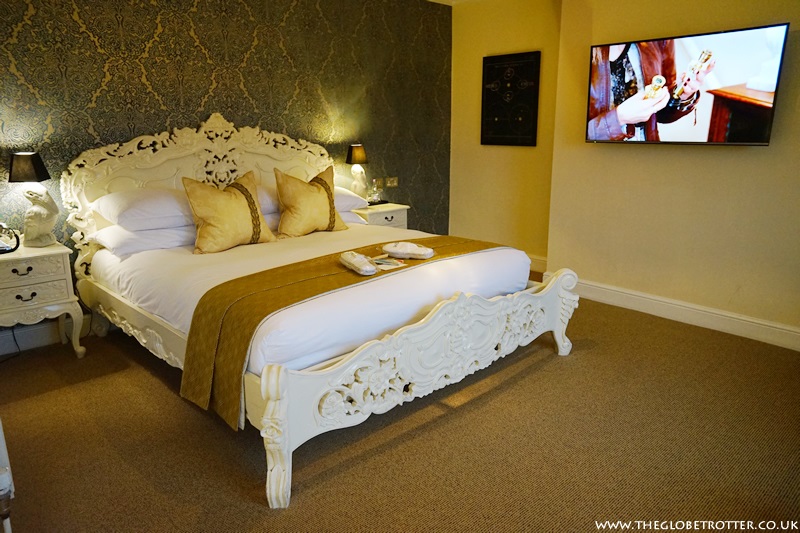

The wet room had a rain head shower and a beautiful free standing copper bath. Fluffy bathrobes, soft & fluffy towels, slippers and luxury toiletries were provided.
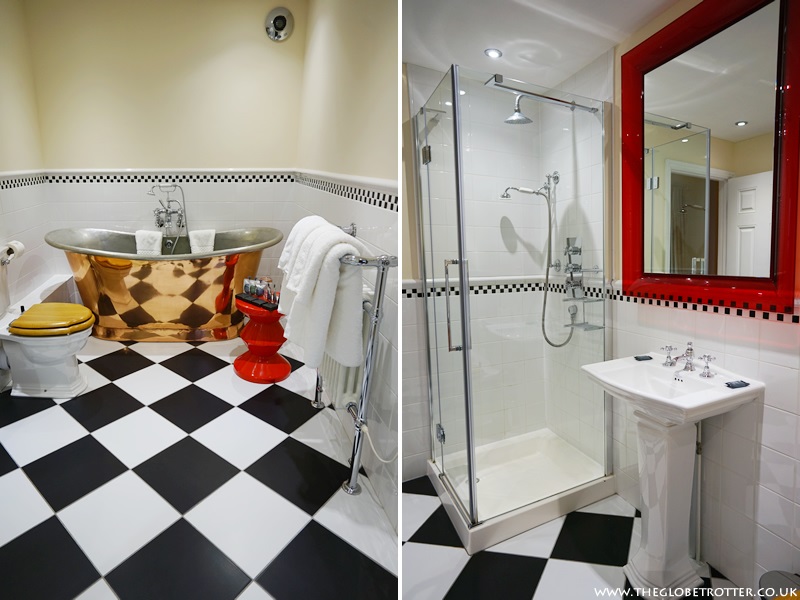
Evening turn down service is available on request.
The room was finished to a high level of comfort with everything one needs to make their stay relaxed and comfortable. As I mentioned earlier, the hotel is in the bustling town centre area but our room was quiet and we slept nicely, waking up well-rested each morning.
Breakfast was served in the Eaterie. The food was good and the service was quick & efficient even though it was quite busy on both mornings of our stay.
Overall, we loved our stay at The Angel - from the fantastic room to the fab service in the restaurant & the friendly staff; everything was top notch. We give it extra points for its superb location, right in the heart of the town within walking distance of all the main landmarks/attractions.
View of the Abbey Gate from the room we stayed in (see picture below).

To book a stay at The Angel Hotel and dinner in the Eaterie restaurant, visit www.theangel.co.uk or call 01284 714000, prices start from around £139 B&B per night for two sharing.
The Angel Hotel | 3 Angel Hill, Bury St Edmunds, Suffolk, IP33 1LT
Where to eat and drink in Bury St Edmunds
Bury St Edmunds' food scene is interesting. It has a huge range of options for food and drinks, from classic English pubs to award-winning restaurants and from cafes & delis to gin bars & tearooms.
The Eaterie is a popular, award-winning 2 rosette restaurant. Part of The Angel Hotel, the restaurant offers a wonderful culinary experience and based on how busy it was when we dined there, it is safe to say that it is equally popular with travellers and locals alike. We enjoyed a vegetarian dinner at the Eaterie and it was fantastic - the food was delicious & beautifully presented and the service was great.

Some other popular restaurants/eateries in Bury are Pea Porridge (independently owned Michelin-starred restaurant), Maison Bleue (ranked 6th favourite in the 2019 Travellers’ Choice Restaurants Awards), Muffin Break (a cafe bakery known for its fresh baked products and great coffee), Casa (for Tapas and Mezze dishes) and The Sheesh (Turkish BBQ restaurant) to name a few.
The Greene King Beer Cafe is not only the starting and finishing point for Greene King Brewery's guided tours but also a lovely place for a lunch, coffee or beer. The menu is not exhaustive but has some comfort food classics. We enjoyed a light lunch here prior to our guided brewery tour.

And while you are in town, don't forget to visit The Nutshell which is said to be the smallest pub in Britain. It measures just 15ft by 7ft and has been serving patrons since 1867.

How to get to Bury St Edmunds
Bury St Edmunds is well connected to the rest of the country via excellent road links. The A12 and M11 make getting to and from London a breeze while the A14 connects the town to the Midlands.
Bury St Edmunds station, which is just a 10 minute walk from the town centre, is served by frequent trains to and from London Kings Cross and London Liverpool Street. Operated by Greater Anglia, the journey time for the trains from London is under 2 hours.
Greater Anglia also provides direct services to Cambridge, Peterborough and Ipswich.
We travelled from Enfield Lock to London Liverpool Street and onwards to Bury St Edmunds with Greater Anglia and the entire journey was comfortable. Plus it was the greenest way to travel and far more sustainable than travelling by car. Another reason we did not opt for car travel was the fact that Bury St Edmunds is very walkable. You can easily walk to most of the town's historic buildings and attractions.

If you are planning to travel by train, you can visit www.greateranglia.co.uk to check Greater Anglia's range of discounted tickets and special offers and to book your tickets.
If you prefer to travel by bus, National Express operates regular services to the town from London Victoria Coach Station. Local bus services connect Bury St Edmunds to Cambridge, Newmarket, Ipswich, Norwich, Lavenham, Sudbury and many other towns.
Abbey of St Edmund 1000 Years | Special events
2020 marked 1,000 years since the founding of the Abbey of St Edmund by King Canute. Unfortunately due to the pandemic the anniversary events could not be held in 2020 or 2021 and so 2022 sees a range of events in support of the Abbey's 1000 year celebrations.
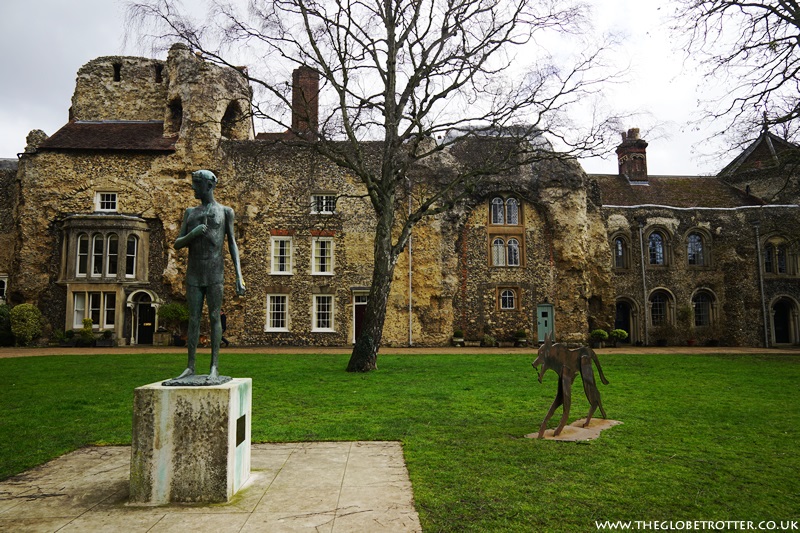
Some of the key events being held this year in Bury St Edmunds for the 1,000 year celebrations include:
- Abbey of St Edmund Anniversary Tours (from April-October): Daily town walks focusing on various aspects of the Abbey and St Edmund. Tour fees apply.
- Abbey 1000 Heritage Trail (from 21st May-20th November): Free trail around the town centre.
- Abbey 1000 Sculpture Exhibition (from May-November): A free, changing display of sculptures in the crypt within the Abbey ruins.
- Bury St Edmunds BioBlitz (20-21st May): This one is for the nature lovers and takes place in and around the Abbey Gardens and Water Meadows.
- St Edmundsbury Cathedral Flower Exhibition (from 20-29th June): a themed flower exhibition to mark the 1,000-year anniversary.
- The Abbey of St Edmund: Artisan and Pilgrimage Exhibition (from 1 July–30 September): Held at Moyse’s Hall Museum, the exhibition will help tell the story of St Edmund and the Abbey.
- St Edmund’s Day Finale and Spectacle of Light (from 17-20 November): Spanning over 3 evenings, this will include a 'Spectacle of Light' show projecting images of illuminated manuscripts from the Abbey onto historic buildings. There will also be a light trail through the Abbey ruins.

I hope you enjoyed reading about how we spent a weekend in Bury St Edmunds. And hopefully, this guide has given you some inspiration for your trip to this historic town.
For more information about things to see and do in Bury St Edmunds or to read more about the Abbey of St Edmund 1000 Years celebration, visit www.burystedmundsandbeyond.co.uk


Would love to do the brewery tour!
ReplyDelete